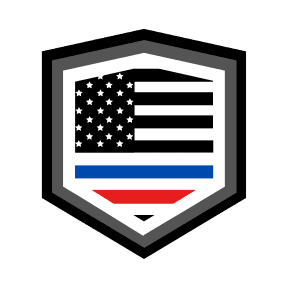In what authorities are calling the largest narcotics seizure in service history, the U.S. Coast Guard offloaded more than 76,000 pounds of illegal drugs at Port Everglades, Florida, during the final week of August 2025.
According to Breitbart, the drug haul, with an estimated value of $473 million, was the result of 19 separate interdictions under Operation Pacific Viper, led by the U.S. Coast Guard and U.S. Navy in collaboration with foreign allies to stem narcotics and human smuggling off Latin America.
The seizure, made by the crew of the Coast Guard Cutter Hamilton, included approximately 61,740 pounds of cocaine and an additional 14,400 pounds of marijuana. According to officials, this marks the largest drug offload since the Coast Guard's inception, highlighting the growing regional threat posed by drug trafficking networks operating across international waters.
Multi-Agency Mission Disrupts Narco-Trafficking Networks
Operation Pacific Viper was developed as part of an initiative to counter illicit smuggling routes in both the Eastern Pacific and the Caribbean Sea. The operation was supported by the U.S. Navy and other partners, including the Royal Netherlands Navy, and carried out under directives from President Donald Trump to enhance military efforts in combating foreign drug cartels in Latin America.
Rear Adm. Adam Chamie, commander of the Coast Guard’s Southeast District, noted the operation’s high stakes and the impact of recent seizures. “To put this into perspective,” Chamie stated, “the potential 23 million lethal doses of cocaine seized… are enough to fatally overdose the entire population of the state of Florida.”
According to a statement issued by the Department of Homeland Security on August 27, the interdictions represent the first major offload resulting from this newly launched mission, intended to bring overwhelming force to transnational criminal operations at sea.
Significant Arrests and Locations of Interdictions Revealed
Capt. John McWhite, commanding officer of the Cutter Hamilton, detailed the operations leading to the monumental bust. His crew intercepted 11 “go-fast” boats—vessels frequently used by traffickers to evade capture—and detained 34 individuals suspected of drug smuggling.
Among the seizures, two particularly stood out for their scale. In June 2025, the Hamilton intercepted two vessels near the Galápagos Islands, netting 8,800 pounds of cocaine. The following month, another massive haul of 9,160 pounds of cocaine was recovered from a separate boat near Socorro Island off the coast of Mexico.
The contraband was confiscated over a series of 19 interdictions, most of which occurred in international waters. More than 80 percent of the U.S. Coast Guard’s drug seizures take place on the high seas, where traffickers believe the lack of territorial jurisdiction provides strategic cover.
High-Tech Teams and Global Collaboration Support Operation
The effort behind Operation Pacific Viper goes far beyond a single vessel and crew. Logistics and support included three Coast Guard cutters, a dedicated helicopter airlift team, and three tactical response units. These were joined by the U.S. Navy’s USS Cole and a Dutch Navy vessel operating under joint authorization.
This cooperation represents a significant evolution in the U.S. approach to drug interdiction—one that combines domestic military resources with international coalition support. The geography of the operation—spanning coastlines near Central and South America and the Pacific and Caribbean corridors—demonstrates the multifaceted nature of modern-day maritime security.
Homeland Security officials emphasized the success of the mission and its significance in addressing national threats. “They are defending the Homeland with overwhelming force,” read the Department's statement, underscoring Washington's latest hardline posture against narcotics networks.
Trump Administration Escalates Regional Anti-Drug Campaign
The success of Hamilton’s mission coincides with new White House directives aimed at intensifying the U.S. military role in cracking down on drug production and trafficking in the Caribbean and Gulf of America. Earlier this month, President Trump authorized a heightened military presence in these regions to disrupt the flow of narcotics into the United States.
While Pacific Viper originated with a maritime enforcement purpose, it functions within broader strategic goals: to deprive cartels of maritime access points used to smuggle drugs northward into the United States; to dismantle transnational logistical networks; and to project American military strength in areas where criminal groups have proved resilient.
This aligns with President Trump’s broader foreign policy approach related to Latin America, which mixes military deterrence with law enforcement partnerships, particularly concerning narcotics and human trafficking operations.
Coast Guard Emphasizes Mission Urgency and Public Safety Impact
The implications of the seizure stretch beyond the maritime realm. Rear Adm. Chamie cited the potential lethal impact of the cocaine alone, driving home the public safety concerns posed by such immense quantities of drugs reaching U.S. communities.
Officials continue to stress that high-seas interdictions form a crucial barrier in preventing not just smuggling, but also the violence, corruption, and instability often linked to narcotics trafficking. The operation’s success, they argue, underscores both the need for strong maritime enforcement and sustained multi-agency coordination.
As the drugs now sit in secure federal custody in Florida, further investigations into the detainees and their affiliations are underway. U.S. officials have not released the nationalities of the 34 individuals taken into custody during the interdictions.

